Past and Present: The International Cork Company of Greenpoint
A look at Brooklyn, then and now. The International Cork Company was established here by James Alberti in 1907. The company’s first factory was a large two-story building at 29-45 Rodney Street in Williamsburg. The company made cork stoppers for beverage bottles as well as for medicines and pharmaceutical use. They were well known in…
A look at Brooklyn, then and now.
The International Cork Company was established here by James Alberti in 1907. The company’s first factory was a large two-story building at 29-45 Rodney Street in Williamsburg. The company made cork stoppers for beverage bottles as well as for medicines and pharmaceutical use. They were well known in the industry for the quality of their medicinal corks.
By 1908, the factory employed over 200 people, three quarters of whom were the young women and girls who made the corks. The other 50 or so were men who performed the other company tasks, including all of the supervisory positions.
International Cork was a family business. Founder James Alberti was joined by his son Emilio, who became president. James Alberti Jr. was vice president and general manager, and his younger brother John was secretary and treasurer.
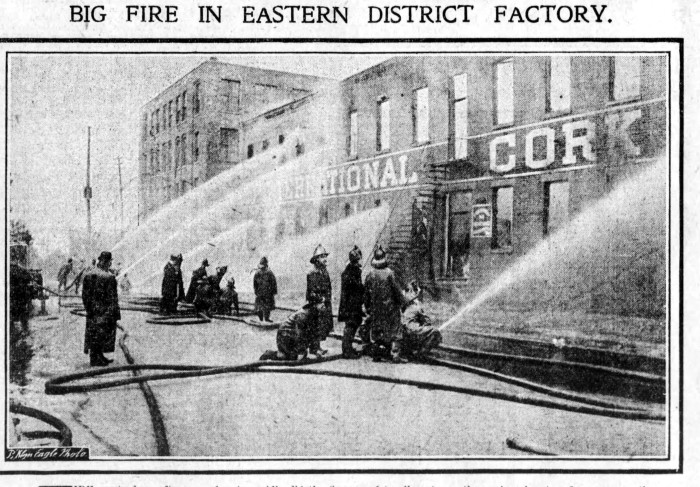
The plant wasn’t a year old when it caught fire in January of 1908. Because of all of the flammable cork in the place, it quickly became an inferno, and in spite of the fire department’s heroic efforts, the building was totally destroyed. Fortunately none of the workers were seriously hurt and no one was killed. The fire department also kept the fire from spreading to a chemical factory next door.
Alberti quickly rebuilt, and opened his new factory at 99 Sutton Street in Greenpoint. It was a large four-story brick factory building that received at least one long addition over the years. An ad for the building in the Eagle in 1911 touted the new sprinkler system and fireproof construction.

There was another fire in the building in 1915, though a less serious one, and there were several serious industrial accidents in the factory over the years.
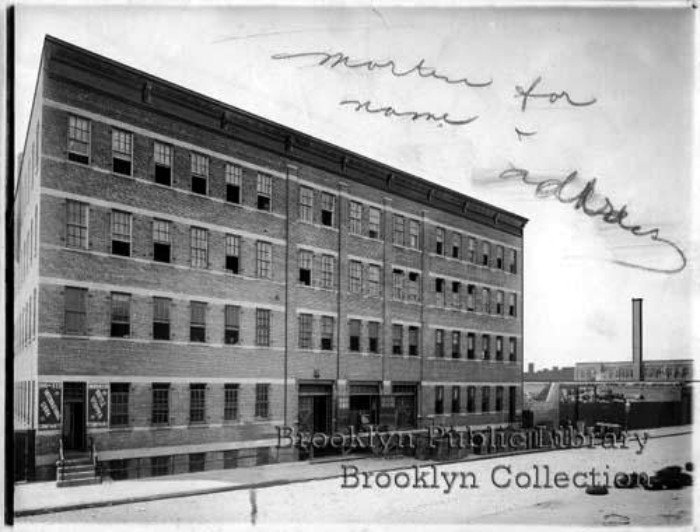
In November of 1910 a young worker named Gaetano Altaro fractured his spine while lifting heavy bags of cork. Three years later a 16-year-old factory worker caught his overalls in some spinning machinery, leading to a fractured skull, a broken leg and lacerations and bruises all over his body.
The International Cork Company was so successful that they opened several other plants in the teens and early 1920s. One was at 53-59 Congress Street and another was on Humboldt Street near Driggs. In 1919, a fire raced through the Congress Street location, but was put out before it destroyed the building.
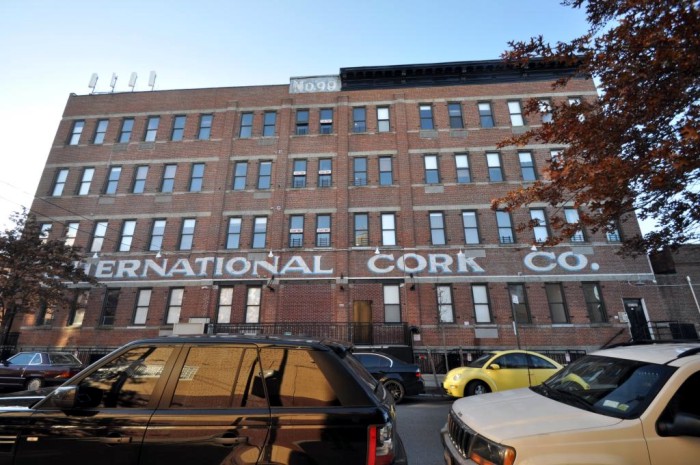
By the early ‘20s, the company was making other products besides corks. The metal bottle cap, which had a cork lining, had been invented, and International Cork soon became one of the largest manufacturers of the caps, with several patents granted for their processes.
The company’s bottle caps were called Re-Ly-On seals, and they were used on Coca-Cola, White Rock, grape juice and — as Prohibition was in full swing by this time — non-alcoholic “near beer” containers.

An ad in the Eagle shows the company’s heavy duty “Autocar,” which was used to deliver locally, as well as to railroads and ports. ICC shipped corked lined bottle tops to bottlers and manufacturers all across the country.

As successful as the Albertis were, they were not immune from mistakes. They filed for bankruptcy protection in 1914, but were able to pull out of it. In 1919, they merged with another Brooklyn cork firm called the Brooklyn Bottle Stopper Company. The new company kept the International Cork name.
In 1922, the company was cited in a large real estate piece about Greenpoint. The reporter talked about many of the different industries that found their homes in Greenpoint, including this one. The reporter noted that between ICC and the another local cork factory, Brooklyn rivaled Catalonia, Spain, for the manufacture of first-quality cork products.
However, as we all know, things can change quickly. In 1923, the Alberti family sold the company to the Crown Cork and Seal Company. Papa Alberti had died years before, and his children had left the cork business. In 1930 the building was sold to a textile dyeing and finishing company.
Later that same year the Feds raided the building and found in the basement a gigantic still, with vats capable of holding 17,000 gallons of hooch. The story was covered across the state.

This 1980s-era tax photo shows that the building, like many such local factory buildings, had become a storage facility. The windows were bricked in, and half of the factory had lost its cornice.
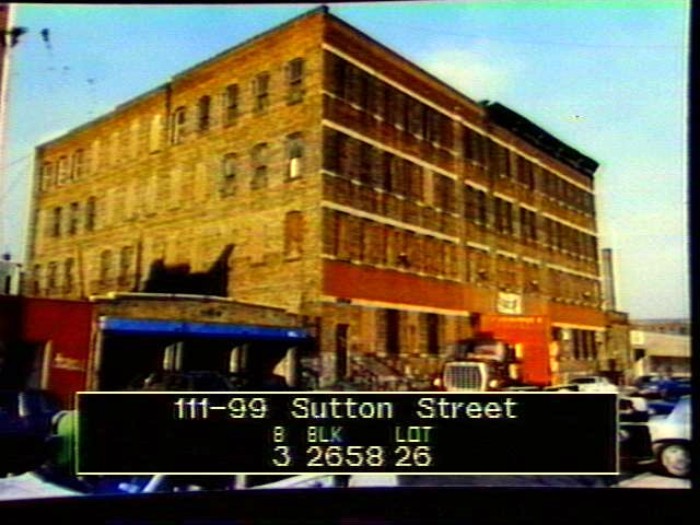
Such factory buildings are perfect for residential conversion, and so it went with the former International Cork Company. There are now 31 apartments in the old factory where teenage girls once made millions of corks for all kinds of bottles.
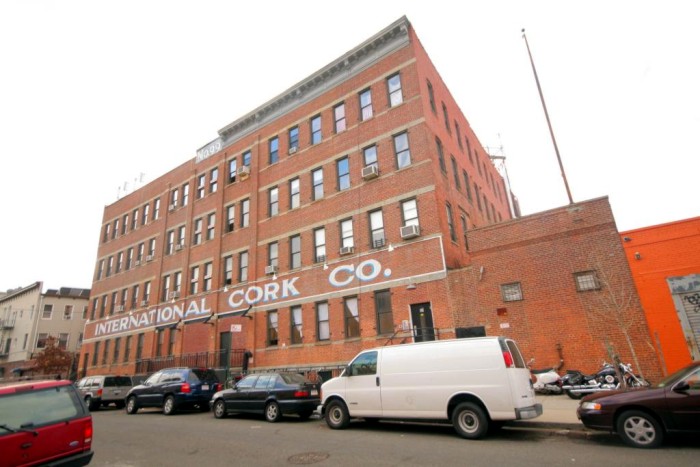

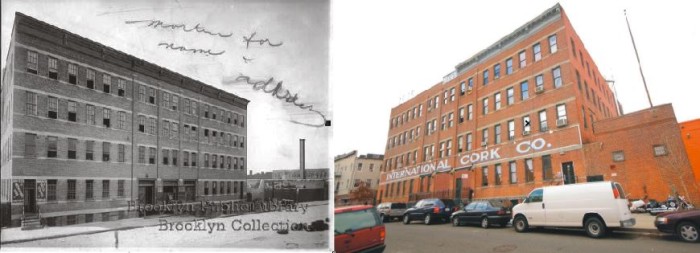




Put back the other half of the cornice, please!
A very interesting piece about a building I know well. When it was operating in 1918, this business would have been VERY vulnenrable to the horrific oil fire of that year that took down a good portion of that part of Greenpoint. They must have been very lucky. I am also sure that my grandfather would have vividly remembered the “hooch story” very well. Also, during its storage days in the 1980’s, this building served as a place where – on Saturday’s – one could purchase a wide variety of classy Italian shoes.